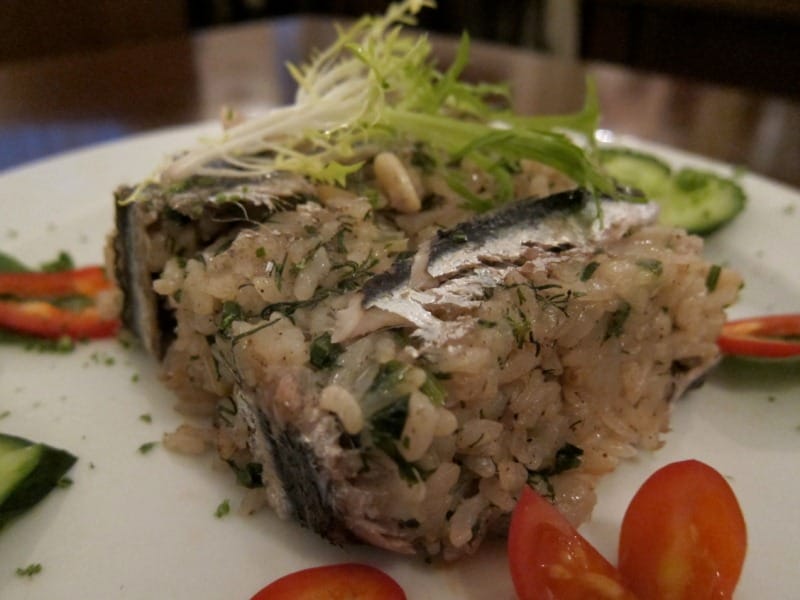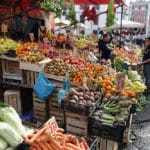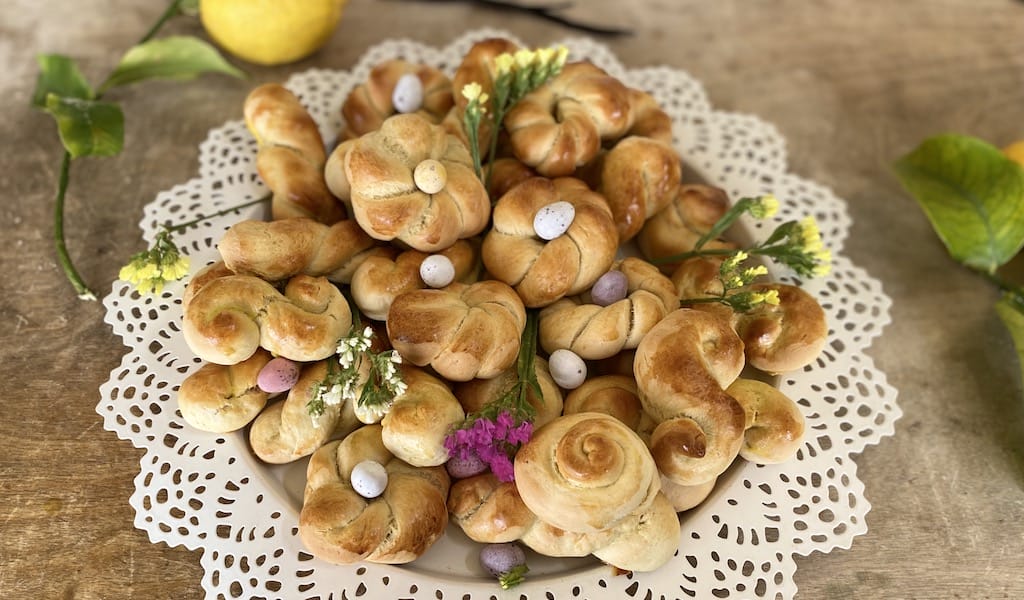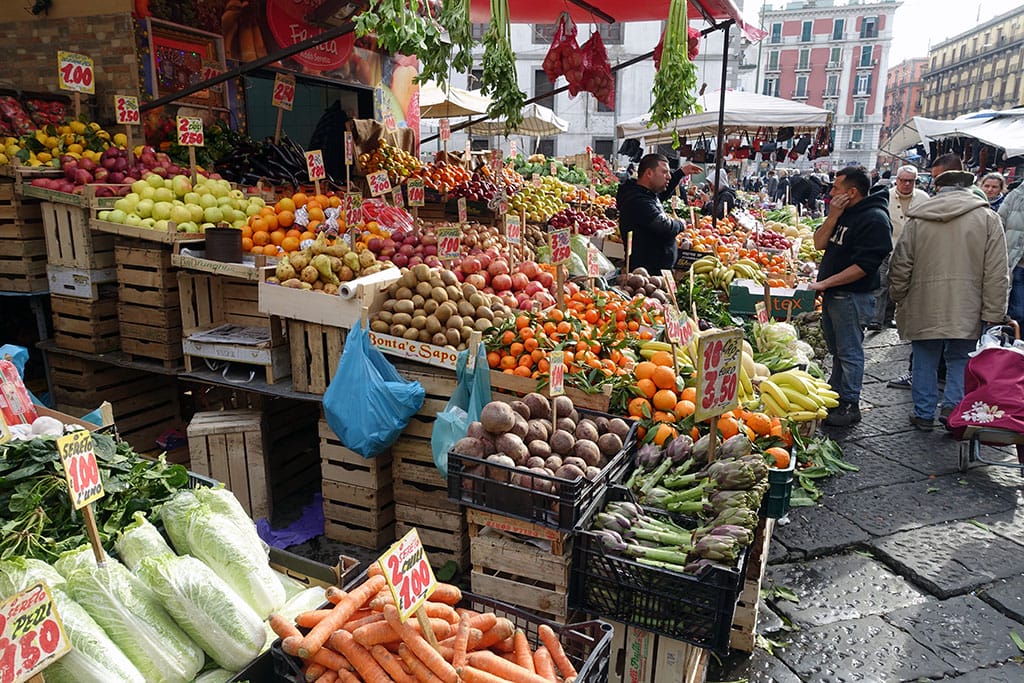Editor’s note: We regret to report that Klemuri has closed.
Like Clark Kent hiding his Superman tights beneath a brown suit and glasses, Klemuri maintains the appearance of a predictable Beyoğlu café – wooden tables, shelves loaded with knickknacks, Buena Vista Social Club on the stereo, spinach crepes and a crispy chicken salad on the menu. But down in the kitchen, out of public view, Klemuri’s alter ego – a spry Laz cook – is waiting to save you from another boring “café” lunch.
Turkish stereotypes like to portray the Laz – an ethnic group from Turkey’s Northeast Black Sea region – as amusing, ignorant mountain folk, who talk with an odd accent and dance a wild jig; they are also the beloved butt of many a one-liner. Thankfully, there is more to the Laz than the caricatures of Dursun and Temel and their redneck adventures. There is the food.
At Klemuri, which in the Laz language refers to the chain that holds the cauldron over the fire, the Karadeniz tabağı (“Black Sea platter”) offers a nice sampling of Black Sea specialties: thick rolls of chard leaves stuffed with a hearty mixture of meat and rice; sautéed onions with crushed walnuts; turşu kavurma, tangy pickled beans fried in a skillet; and a sort of potato salad served hot. On the side comes a basket of cornbread, the hallmark of Black Sea cuisine.
On every visit, we’ve been happy to find Klemuri’s muhlama – a sort of Laz fondue – heavy on the cornmeal and butter. A skillet of cheese fresh from the yayla, or highland pastures, shot through with cornmeal and pan-fried in rich butter is a delicious reminder of the Kaçkar Mountains. But be careful: one portion of this rich dish can easily feed two or three people.

Another staple of the region’s cuisine is of course the hamsi (anchovy), of which the Black Sea is blessed with particularly tasty specimens. During the winter months, when anchovies are in season, one of our favorite dishes is hamsili pilav, a savory rice cake cloaked in thin hamsi fillets. With its currants and pine nuts, Klemuri’s hamsili pilav is a little dressed up compared to some of the village versions we’ve had, but it is the real deal.
Along with the Eastern Black Sea standards are a couple of dishes from the region that we rarely encounter. Silor is a variation on mantı dumplings in which yufka (a thicker version of phyllo pastry) is rolled up like a newspaper around a loose stuffing of finely ground beef and then cut into finger-width sections. The result is dressed, like mantı, in rich Trabzon butter and yogurt infused with red pepper flakes. The Georgian-style gulaş (goulash), or Gürcü yahnisi, looks like a stew deconstructed: one hunk of seriously soft beef and a wrist-thick carrot glazed in an oniony, peppery gravy redolent with the Georgian secret weapon, cilantro.
As if these regular menu items were not enough, some seasonal specials from the Laz kitchen that we’ve had at Klemuri include pepeçura, ekşaş, mafuş and several others that we’d never heard of before. You’ll also want to save room for a piece of Laz böreği, a sweet pastry filled with a scoop of pudding. Feeling a bit overwhelmed? Thinking of ordering the crepe to be on the safe side? Just open your mouth and say hamsi.
 April 28, 2021 Recipe
April 28, 2021 Recipe
Greek Easter – this year celebrated on Sunday, May 2 – involves a great deal of baking, […] Posted in Athens March 23, 2021 Building Blocks
March 23, 2021 Building Blocks
That the Portuguese love rice – Portugal is, in fact, Europe’s largest consumer of rice […] Posted in Lisbon March 16, 2017 Naples
March 16, 2017 Naples
Editor's Note: This piece marks the beginning of CB's new section devoted to the food of […] Posted in Naples
Published on October 22, 2012
Related stories
April 28, 2021
AthensGreek Easter – this year celebrated on Sunday, May 2 – involves a great deal of baking, from breads to cookies and sweet treats. Many of these traditional recipes are rich with symbolic meaning, usually referencing the regeneration of the earth, the blooming of spring, as well as the honoring of the dead. Some of…
March 23, 2021
LisbonThat the Portuguese love rice – Portugal is, in fact, Europe’s largest consumer of rice – comes as a surprise for many. Unlike Spanish paella or Italian risotto, the country’s rice dishes are barely known beyond its borders. Yet a glance at the menu of any tasca or traditional restaurant in Lisbon will reveal the…
March 16, 2017
NaplesEditor's Note: This piece marks the beginning of CB's new section devoted to the food of Naples, Italy, and the people making it. We plan to file regular dispatches from this bastion of southern Italian traditions. While in many parts of Europe consumer capitalism has brought an invasion of chain supermarkets and restaurants, contributing to the…


















































































